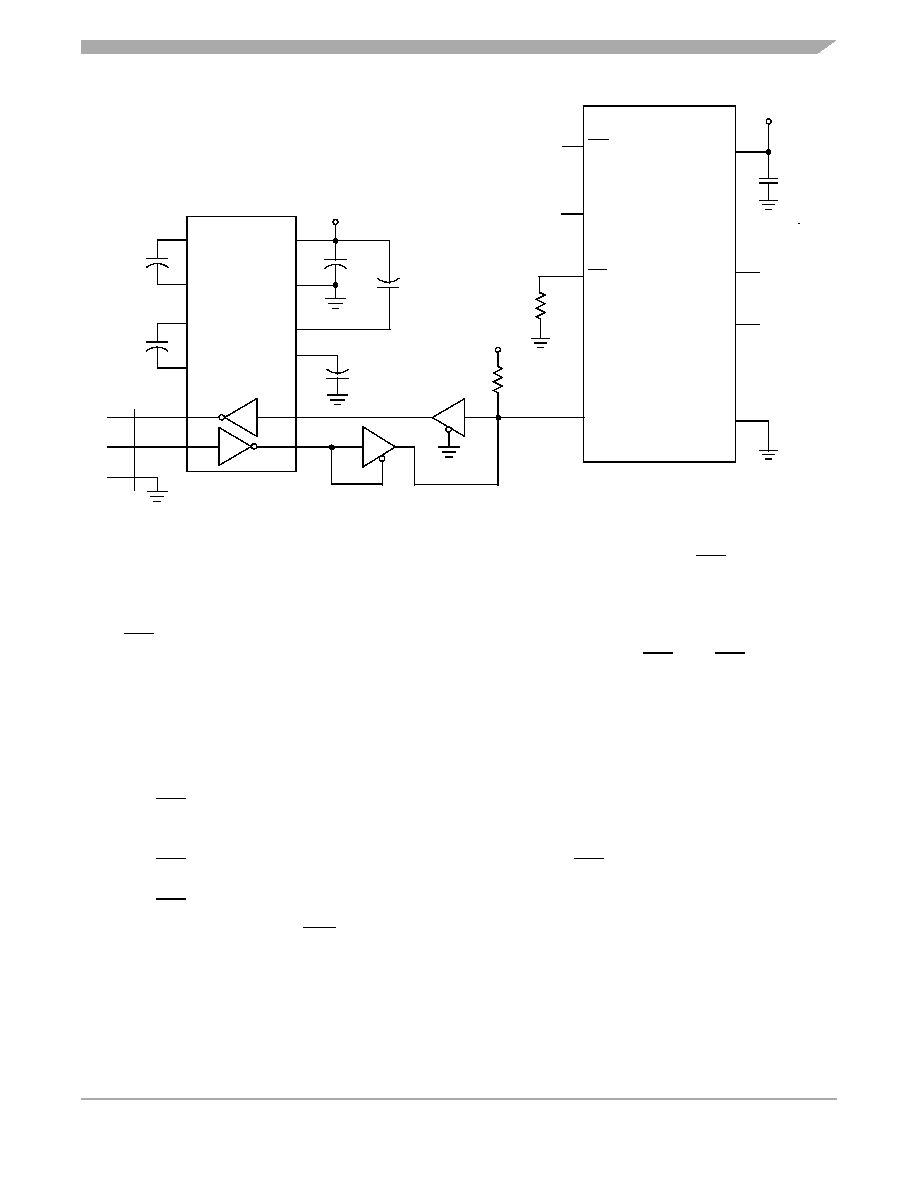- 您現(xiàn)在的位置:買賣IC網(wǎng) > PDF目錄45283 > MC908QT1AVFQ (FREESCALE SEMICONDUCTOR INC) 8-BIT, FLASH, 8 MHz, MICROCONTROLLER, DSO8 PDF資料下載
參數(shù)資料
| 型號(hào): | MC908QT1AVFQ |
| 廠商: | FREESCALE SEMICONDUCTOR INC |
| 元件分類: | 微控制器/微處理器 |
| 英文描述: | 8-BIT, FLASH, 8 MHz, MICROCONTROLLER, DSO8 |
| 封裝: | 4 X 4 MM, 1 MM HEIGHT, 0.80 MM PITCH, DFN-8 |
| 文件頁(yè)數(shù): | 54/200頁(yè) |
| 文件大小: | 2588K |
| 代理商: | MC908QT1AVFQ |
第1頁(yè)第2頁(yè)第3頁(yè)第4頁(yè)第5頁(yè)第6頁(yè)第7頁(yè)第8頁(yè)第9頁(yè)第10頁(yè)第11頁(yè)第12頁(yè)第13頁(yè)第14頁(yè)第15頁(yè)第16頁(yè)第17頁(yè)第18頁(yè)第19頁(yè)第20頁(yè)第21頁(yè)第22頁(yè)第23頁(yè)第24頁(yè)第25頁(yè)第26頁(yè)第27頁(yè)第28頁(yè)第29頁(yè)第30頁(yè)第31頁(yè)第32頁(yè)第33頁(yè)第34頁(yè)第35頁(yè)第36頁(yè)第37頁(yè)第38頁(yè)第39頁(yè)第40頁(yè)第41頁(yè)第42頁(yè)第43頁(yè)第44頁(yè)第45頁(yè)第46頁(yè)第47頁(yè)第48頁(yè)第49頁(yè)第50頁(yè)第51頁(yè)第52頁(yè)第53頁(yè)當(dāng)前第54頁(yè)第55頁(yè)第56頁(yè)第57頁(yè)第58頁(yè)第59頁(yè)第60頁(yè)第61頁(yè)第62頁(yè)第63頁(yè)第64頁(yè)第65頁(yè)第66頁(yè)第67頁(yè)第68頁(yè)第69頁(yè)第70頁(yè)第71頁(yè)第72頁(yè)第73頁(yè)第74頁(yè)第75頁(yè)第76頁(yè)第77頁(yè)第78頁(yè)第79頁(yè)第80頁(yè)第81頁(yè)第82頁(yè)第83頁(yè)第84頁(yè)第85頁(yè)第86頁(yè)第87頁(yè)第88頁(yè)第89頁(yè)第90頁(yè)第91頁(yè)第92頁(yè)第93頁(yè)第94頁(yè)第95頁(yè)第96頁(yè)第97頁(yè)第98頁(yè)第99頁(yè)第100頁(yè)第101頁(yè)第102頁(yè)第103頁(yè)第104頁(yè)第105頁(yè)第106頁(yè)第107頁(yè)第108頁(yè)第109頁(yè)第110頁(yè)第111頁(yè)第112頁(yè)第113頁(yè)第114頁(yè)第115頁(yè)第116頁(yè)第117頁(yè)第118頁(yè)第119頁(yè)第120頁(yè)第121頁(yè)第122頁(yè)第123頁(yè)第124頁(yè)第125頁(yè)第126頁(yè)第127頁(yè)第128頁(yè)第129頁(yè)第130頁(yè)第131頁(yè)第132頁(yè)第133頁(yè)第134頁(yè)第135頁(yè)第136頁(yè)第137頁(yè)第138頁(yè)第139頁(yè)第140頁(yè)第141頁(yè)第142頁(yè)第143頁(yè)第144頁(yè)第145頁(yè)第146頁(yè)第147頁(yè)第148頁(yè)第149頁(yè)第150頁(yè)第151頁(yè)第152頁(yè)第153頁(yè)第154頁(yè)第155頁(yè)第156頁(yè)第157頁(yè)第158頁(yè)第159頁(yè)第160頁(yè)第161頁(yè)第162頁(yè)第163頁(yè)第164頁(yè)第165頁(yè)第166頁(yè)第167頁(yè)第168頁(yè)第169頁(yè)第170頁(yè)第171頁(yè)第172頁(yè)第173頁(yè)第174頁(yè)第175頁(yè)第176頁(yè)第177頁(yè)第178頁(yè)第179頁(yè)第180頁(yè)第181頁(yè)第182頁(yè)第183頁(yè)第184頁(yè)第185頁(yè)第186頁(yè)第187頁(yè)第188頁(yè)第189頁(yè)第190頁(yè)第191頁(yè)第192頁(yè)第193頁(yè)第194頁(yè)第195頁(yè)第196頁(yè)第197頁(yè)第198頁(yè)第199頁(yè)第200頁(yè)

Monitor Module (MON)
MC68HC908QYA/QTA Family Data Sheet, Rev. 1
Freescale Semiconductor
147
Figure 15-12. Monitor Mode Circuit (Internal Clock, No High Voltage)
The monitor code has been updated from previous versions of the monitor code to allow enabling the
internal oscillator to generate the internal clock. This addition, which is enabled when IRQ is held low out
of reset, is intended to support serial communication/programming at 9600 baud in monitor mode by using
the internal oscillator, and the internal oscillator user trim value OSCTRIM (FLASH location $FFC0, if
programmed) to generate the desired internal frequency (3.2 MHz). Since this feature is enabled only
when IRQ is held low out of reset, it cannot be used when the reset vector is programmed (i.e., the value
is not $FFFF) because entry into monitor mode in this case requires VTST on IRQ. The IRQ pin must
remain low during this monitor session in order to maintain communication.
Table 15-1 shows the pin conditions for entering monitor mode. As specified in the table, monitor mode
may be entered after a power-on reset (POR) and will allow communication at 9600 baud provided one
of the following sets of conditions is met:
If $FFFE and $FFFF do not contain $FF (programmed state):
–
The external clock is 9.8304 MHz
–IRQ = VTST
If $FFFE and $FFFF contain $FF (erased state):
–
The external clock is 9.8304 MHz
–IRQ = VDD (this can be implemented through the internal IRQ pullup)
If $FFFE and $FFFF contain $FF (erased state):
–IRQ = VSS (internal oscillator is selected, no external clock required)
The rising edge of the internal RST signal latches the monitor mode. Once monitor mode is latched, the
values on PTA1 and PTA4 pins can be changed.
Once out of reset, the MCU waits for the host to send eight security bytes (see 15.3.2 Security). After the
security bytes, the MCU sends a break signal (10 consecutive 0s) to the host, indicating that it is ready to
receive a command.
RST (PTA3)
IRQ (PTA2)
PTA0
10 k
Ω
*
OSC1 (PTA5)
N.C.
8
7
DB9
2
3
5
16
15
2
6
10
9
VDD
1
μF
MAX232
C1+
C1–
V+
V–
5
4
1
μF
C2+
C2–
VDD
1
μF
+
1
2
3
4
5
6
74HC125
10 k
Ω
N.C.
PTA1
N.C.
PTA4
VSS
0.1
μF
VDD
+
3
1
μF
+
1
μF
VDD
* Value not critical
N.C.
相關(guān)PDF資料 |
PDF描述 |
|---|---|
| MC908QT4AVDW | 8-BIT, FLASH, 8 MHz, MICROCONTROLLER, PDSO8 |
| MC908QY4AVDW | 8-BIT, FLASH, 8 MHz, MICROCONTROLLER, PDSO16 |
| MC908QY1AVDT | 8-BIT, FLASH, 8 MHz, MICROCONTROLLER, PDSO16 |
| MC908QY2AVP | 8-BIT, FLASH, 8 MHz, MICROCONTROLLER, PDIP16 |
| MC908QY2AVDT | 8-BIT, FLASH, 8 MHz, MICROCONTROLLER, PDSO16 |
相關(guān)代理商/技術(shù)參數(shù) |
參數(shù)描述 |
|---|---|
| MC908QT1CDTE | 制造商:FREESCALE 制造商全稱:Freescale Semiconductor, Inc 功能描述:Microcontrollers |
| MC908QT1CDWE | 制造商:FREESCALE 制造商全稱:Freescale Semiconductor, Inc 功能描述:Microcontrollers |
| MC908QT1CFQE | 制造商:FREESCALE 制造商全稱:Freescale Semiconductor, Inc 功能描述:M68HC08 Microcontrollers |
| MC908QT1CPE | 制造商:FREESCALE 制造商全稱:Freescale Semiconductor, Inc 功能描述:M68HC08 Microcontrollers |
| MC908QT1DTE | 制造商:FREESCALE 制造商全稱:Freescale Semiconductor, Inc 功能描述:M68HC08 Microcontrollers |
發(fā)布緊急采購(gòu),3分鐘左右您將得到回復(fù)。